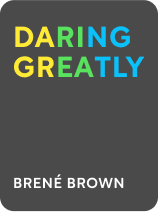

This article is an excerpt from the Shortform book guide to "Daring Greatly" by Brené Brown. Shortform has the world's best summaries and analyses of books you should be reading.
Like this article? Sign up for a free trial here .
What is the strategy vs culture dichotomy? Is it possible to reconcile the two?
In any community or collective, there is always some degree of compromise between strategy vs culture. Strategy is the plan of action for achieving a certain goal or target. Culture is made up of social contracts that formulate the status quo and define what is acceptable within the collective.
Read about the strategy vs culture dichotomy.
What Is the Strategy vs Culture Dichotomy?
In every group or collective, there is always some degree of disconnect between the strategies used to achieve its goals and the actual cultural environment in reality.
Strategy: The method or plan for achieving a goal. You might say strategy is part of “how we want to show up”. Everyone utilizes strategy. Families utilize it to achieve life milestones like having a baby or moving across the country, religious groups use it to build their congregation, and teachers use it to facilitate student learning goals.
Culture: Culture, or as Brown calls it, “the way we do things around here,” is defined by what behavior is acceptable within the collective. You might call culture “how we show up in practice”. From a goal-oriented standpoint, it’s less about the goal or the strategy of achieving it, and more about who or what the goal serves.
When we don’t find a way to compromise between strategy vs culture, we experience a greater societal disconnect, which prevents our ability to engage with one another in wholehearted ways on the broader scale.
How Can We Gain Insight Into the Culture of Any Group?
In order to see the gap between a society’s strategy vs culture, you need to first understand what the culture of that society is. You can learn a lot about any particular culture by asking some key questions.
- What actions are praised or rejected?
- Where are people focusing their time, money, and attention?
- What agreements are in place? Rules everyone follows? Rules everyone breaks?
- Do people feel able to safely express themselves and/or advocate for their needs?
- Are there any stories beloved to the group? What values do they reflect?
- What happens when someone messes up?
- How do people react to the idea of being vulnerable?
- Is there a lot of blame? Shame? In what ways?
- How do people feel about discomfort? Threatened? Curious?

———End of Preview———
Like what you just read? Read the rest of the world's best book summary and analysis of Brené Brown's "Daring Greatly" at Shortform .
Here's what you'll find in our full Daring Greatly summary :
- What it means to live Wholeheartedly
- The 3 things you need to feel happy and healthy
- How scarcity and shame prevent you from achieving a Wholehearted life






